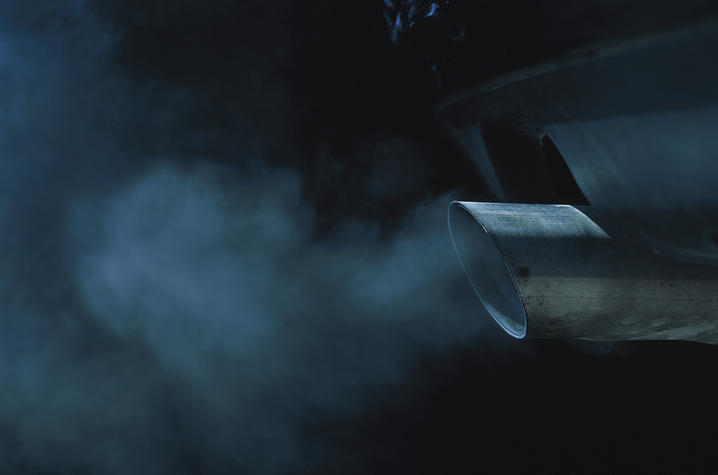UK Research Leads to Patent Designed to Reduce Vehicle Emissions
LEXINGTON, Ky. (May 21, 2020) — Transportation is the world's largest source of greenhouse gas emissions, and automakers in the U.S. and around the world continue to meet ever increasing standards designed to reduce vehicle pollution. This pollution not only contributes to climate change, but can be detrimental to human health as well.
But meeting these rules can be a challenge for automakers.
Adhering to the new standards requires the removal of pollutants — specifically poisonous, highly reactive nitrogen oxides (NOx) — from exhaust gas when a vehicle is first started and the gas is still cold. However, the device that does this — a catalytic converter — needs to be warm to efficiently remove NOx.
Mark Crocker, professor of chemistry in the University of Kentucky College of Arts and Sciences and assistant director of the Biofuels and Environmental Catalysis Group at the UK Center for Applied Energy Research (CAER), along with CAER research scientist Yaying Ji, have developed and patented a novel technology that addresses this problem.
Named “passive NOx adsorbers,” the technology uses a material that traps NOx emissions at low temperatures and then releases them at higher temperatures, at which point the converter has warmed up and is able to remove the NOx.
“Once they’ve reached operating temperature, present-day catalytic converters are extremely efficient, typically removing more than 99% of NOx emissions,” Crocker said. “Consequently, the majority of vehicle emissions occur during cold starts — in other words, before the catalytic converter is working properly. We conducted research on a class of materials that can effectively trap pollutants until the vehicle’s catalytic converter is warm enough to convert them to harmless products, like nitrogen and water."
Crocker says this technology could play a critical role in creating cleaner and more efficient vehicles.
The project’s industrial partner, Luxfer MEL Technologies, is currently providing samples of the technology to vehicle manufacturers for evaluation.
“Solving a complex, far-reaching environmental problem is a hallmark of the UK Center for Applied Energy Research,” said CAER Director Rodney Andrews. “This work from Mark Crocker and Yaying Ji is a great example of how we partner and collaborate with the business community to develop new technologies.”
The new technology is the result of a $900,000 grant Crocker’s CAER group received from the National Science Foundation in conjunction with the U.S. Department of Energy’s Vehicle Technologies Office.
Currently, Crocker, Ji and chemistry graduate student Robby Pace are looking at another class of material — zeolites — for this same purpose.
“Zeolites are potentially even more promising for trapping NOx, however, the chemistry of NOx storage in zeolites is highly complex,” Crocker said. “Funding is being provided in the form of a $2 million grant from the U.S. Department of Energy’s Vehicle Technologies Office.”
As part of this grant, UK CAER is partnering with the University of California, Berkeley; Purdue University; Oak Ridge National Laboratory; the Ford Motor Company; and BASF, the largest chemical producer in the world.
As the state’s flagship, land-grant institution, the University of Kentucky exists to advance the Commonwealth. We do that by preparing the next generation of leaders — placing students at the heart of everything we do — and transforming the lives of Kentuckians through education, research and creative work, service and health care. We pride ourselves on being a catalyst for breakthroughs and a force for healing, a place where ingenuity unfolds. It's all made possible by our people — visionaries, disruptors and pioneers — who make up 200 academic programs, a $476.5 million research and development enterprise and a world-class medical center, all on one campus.







